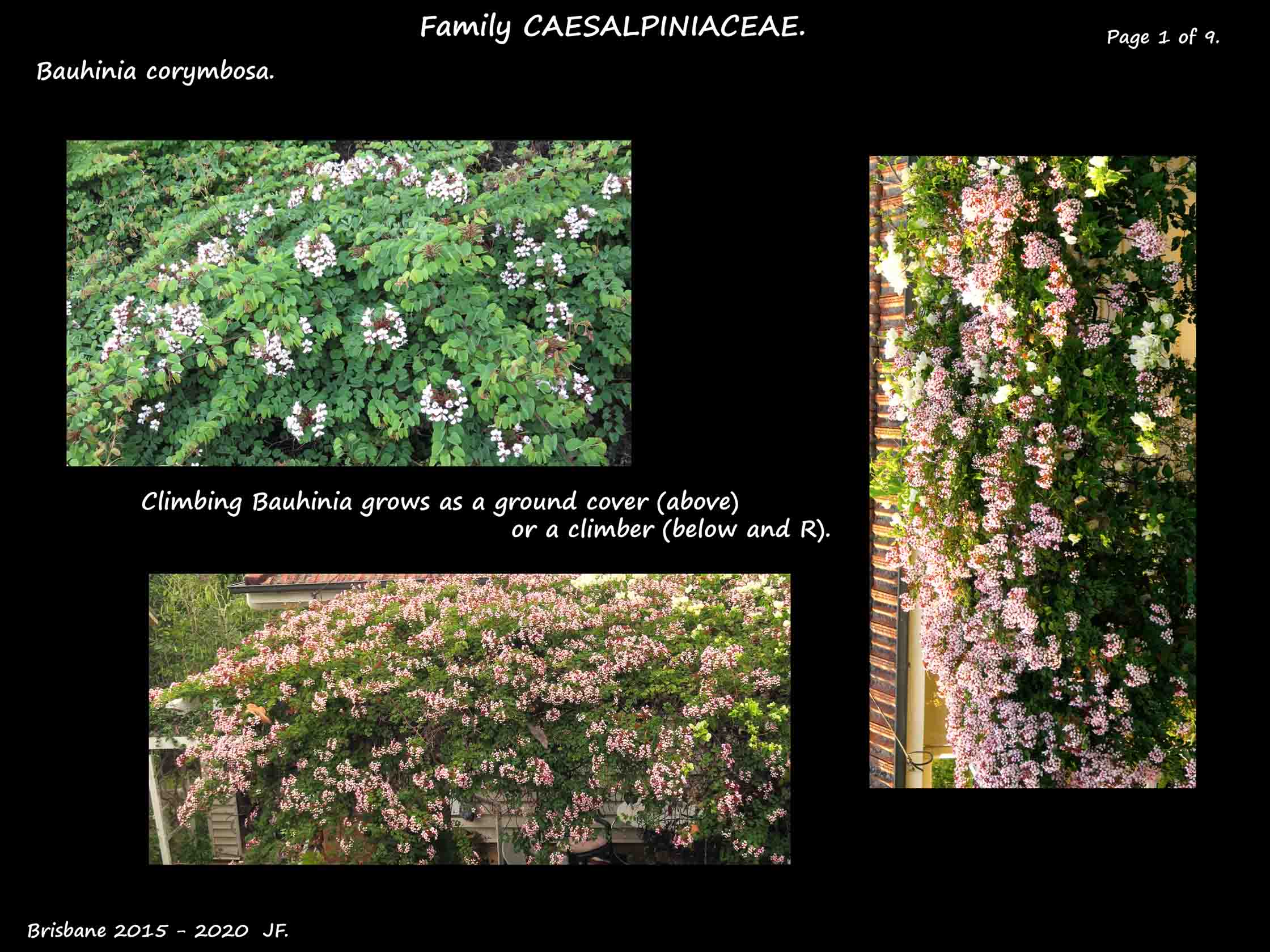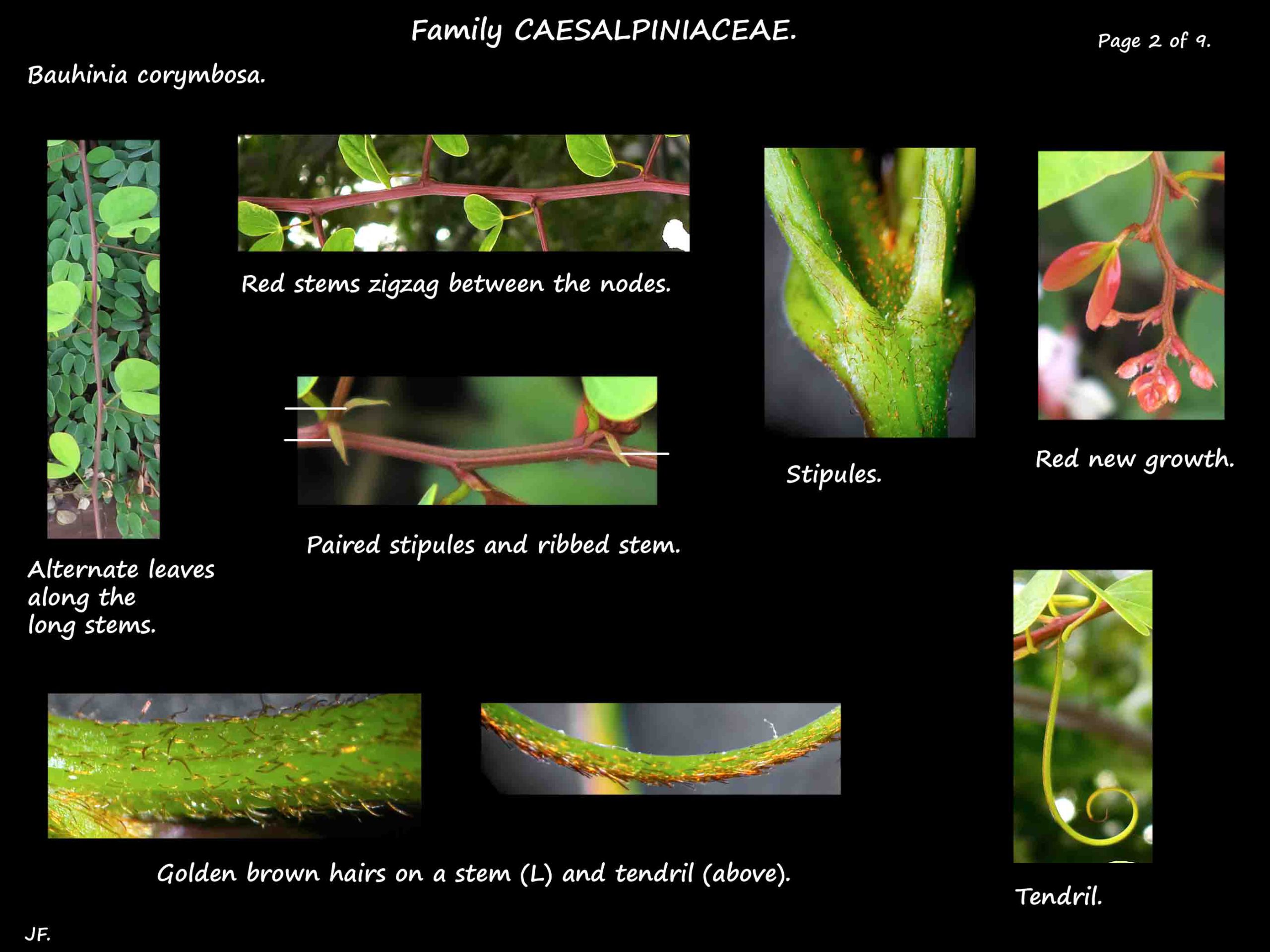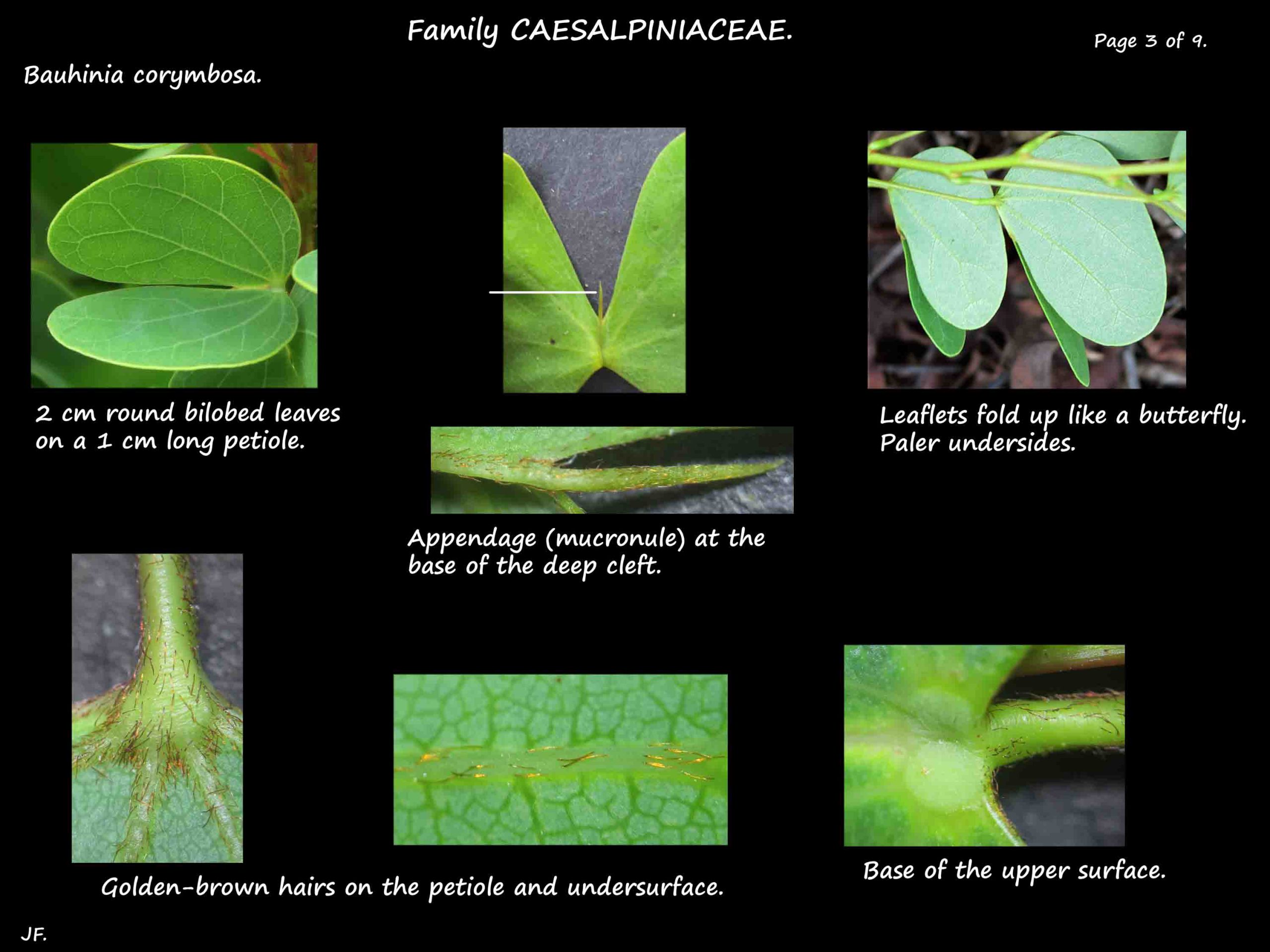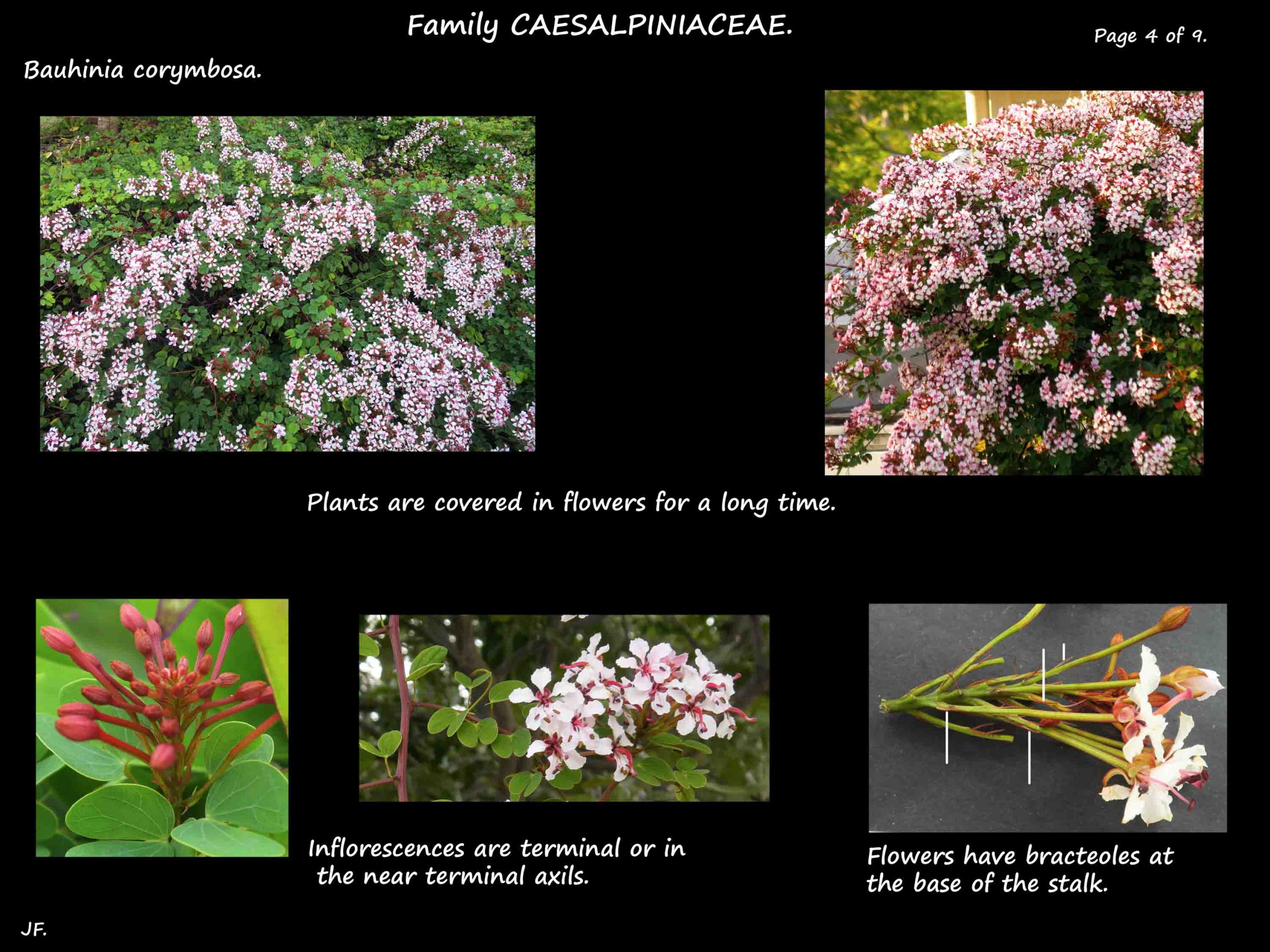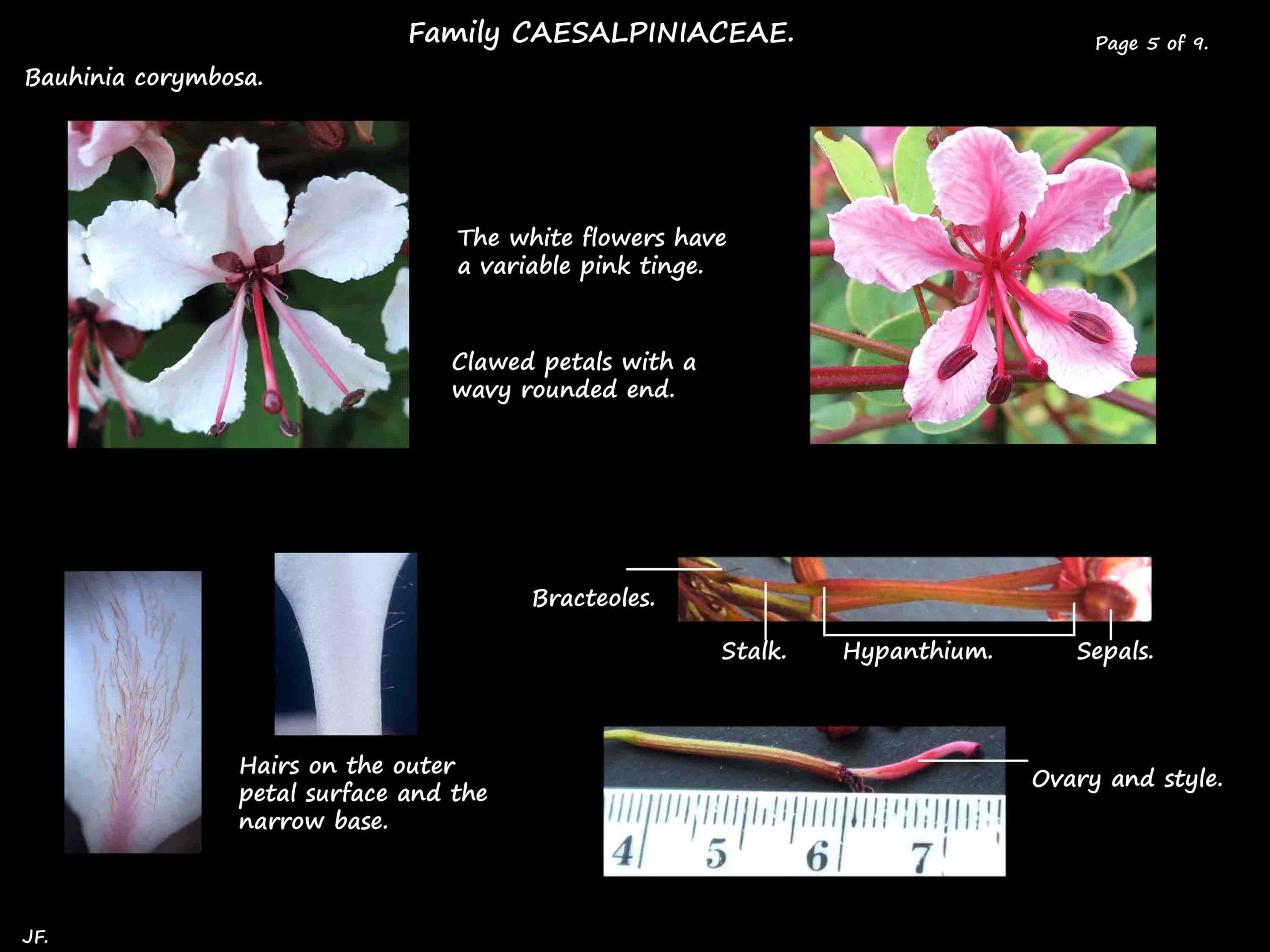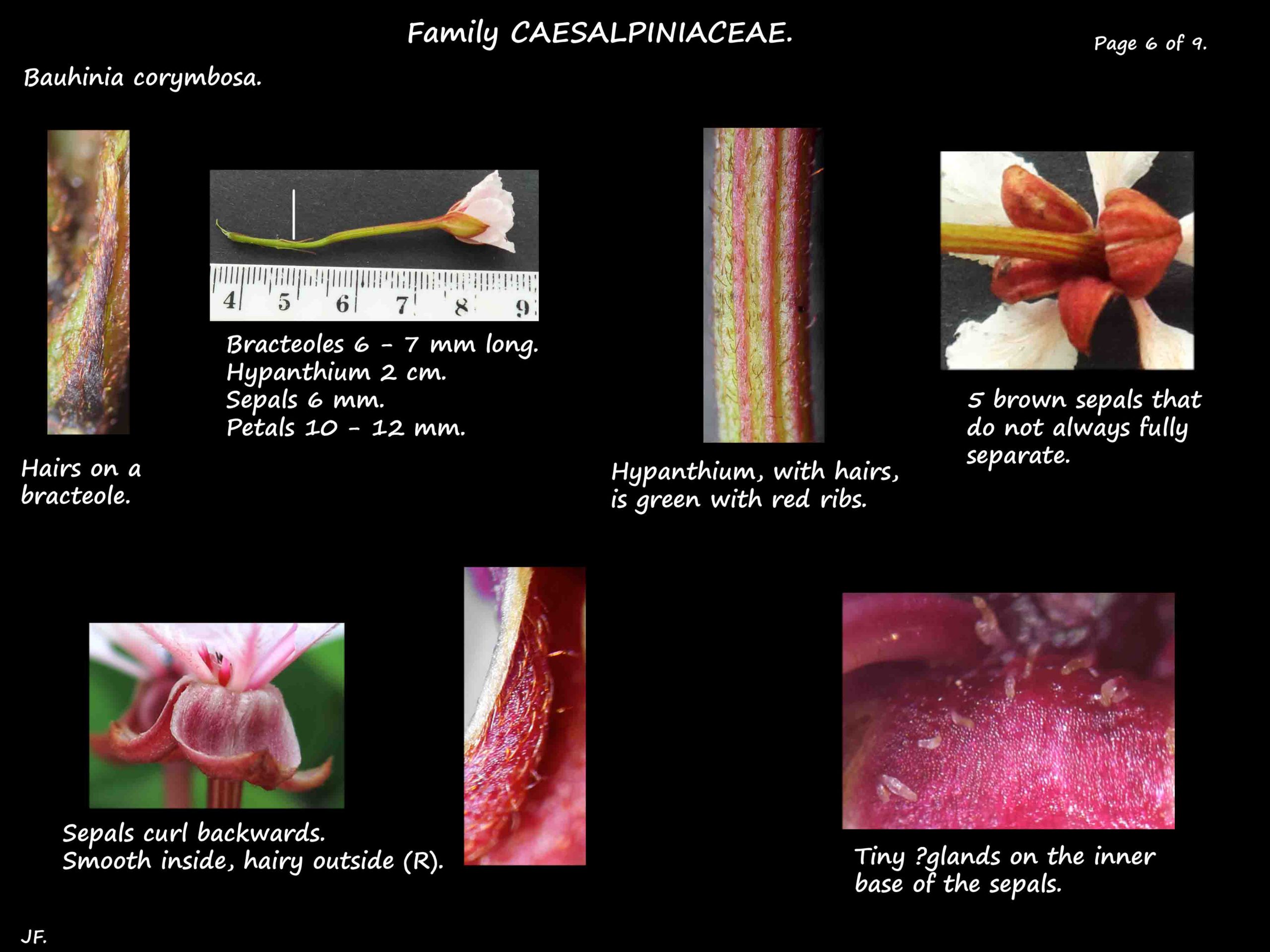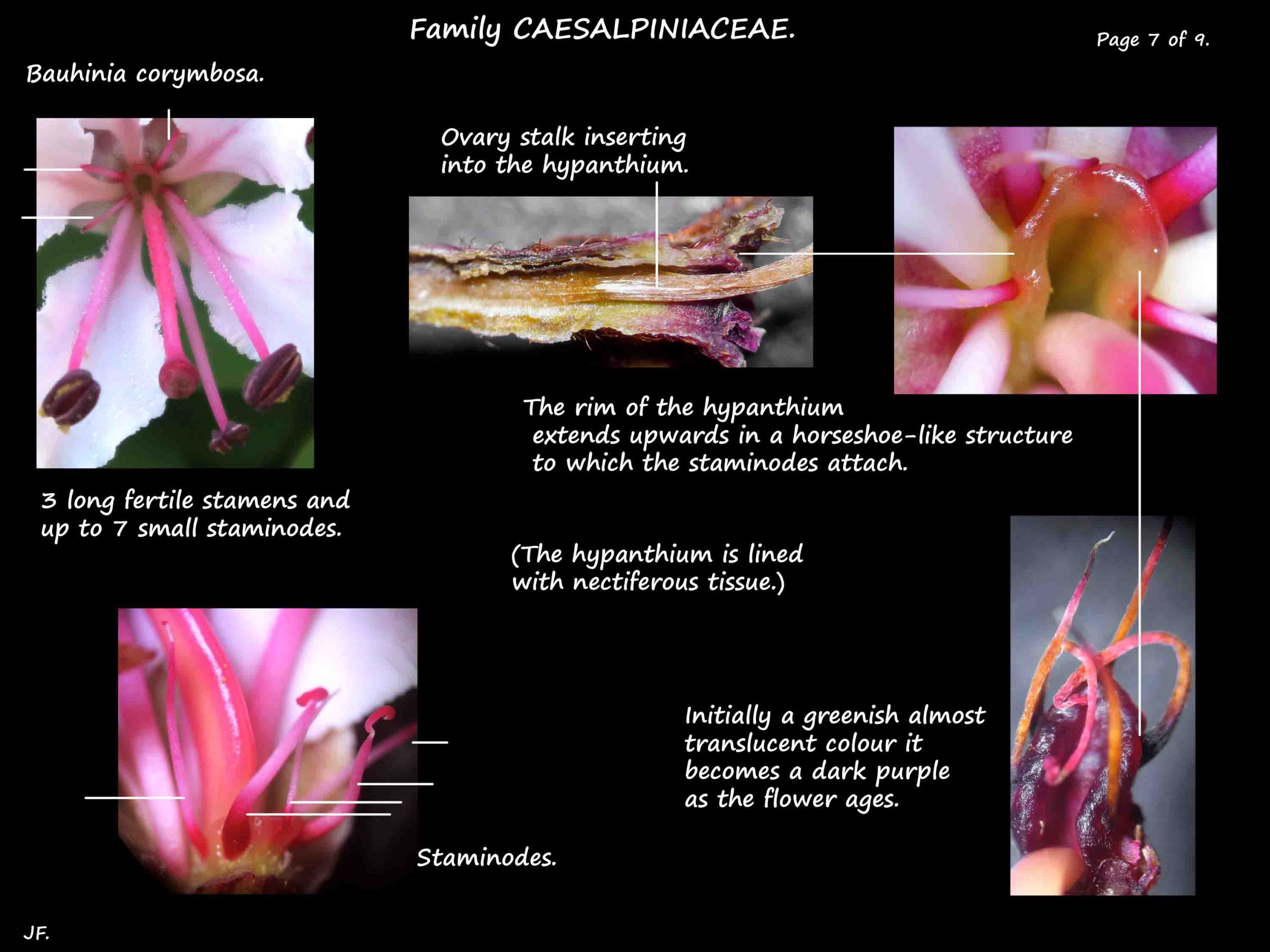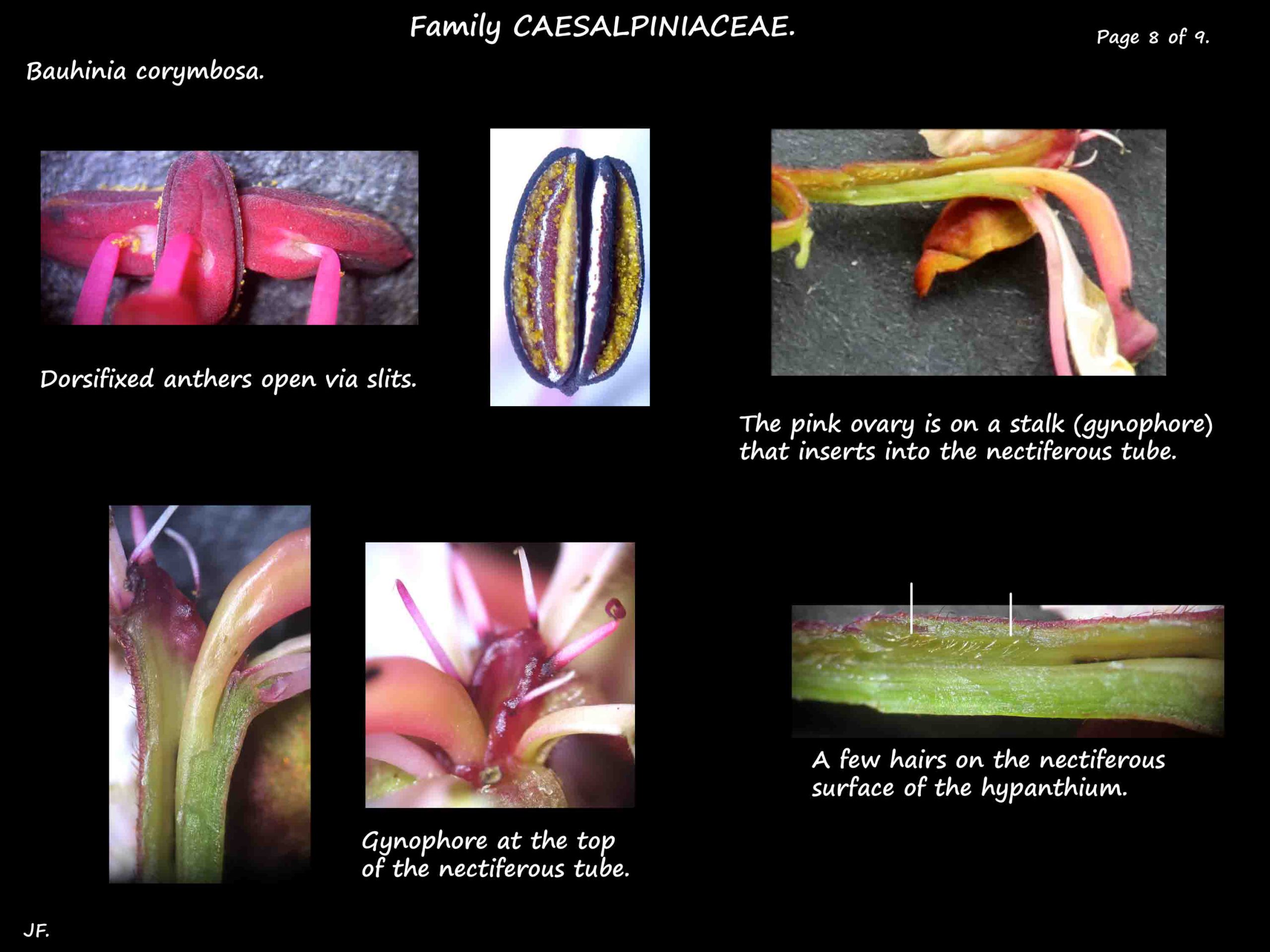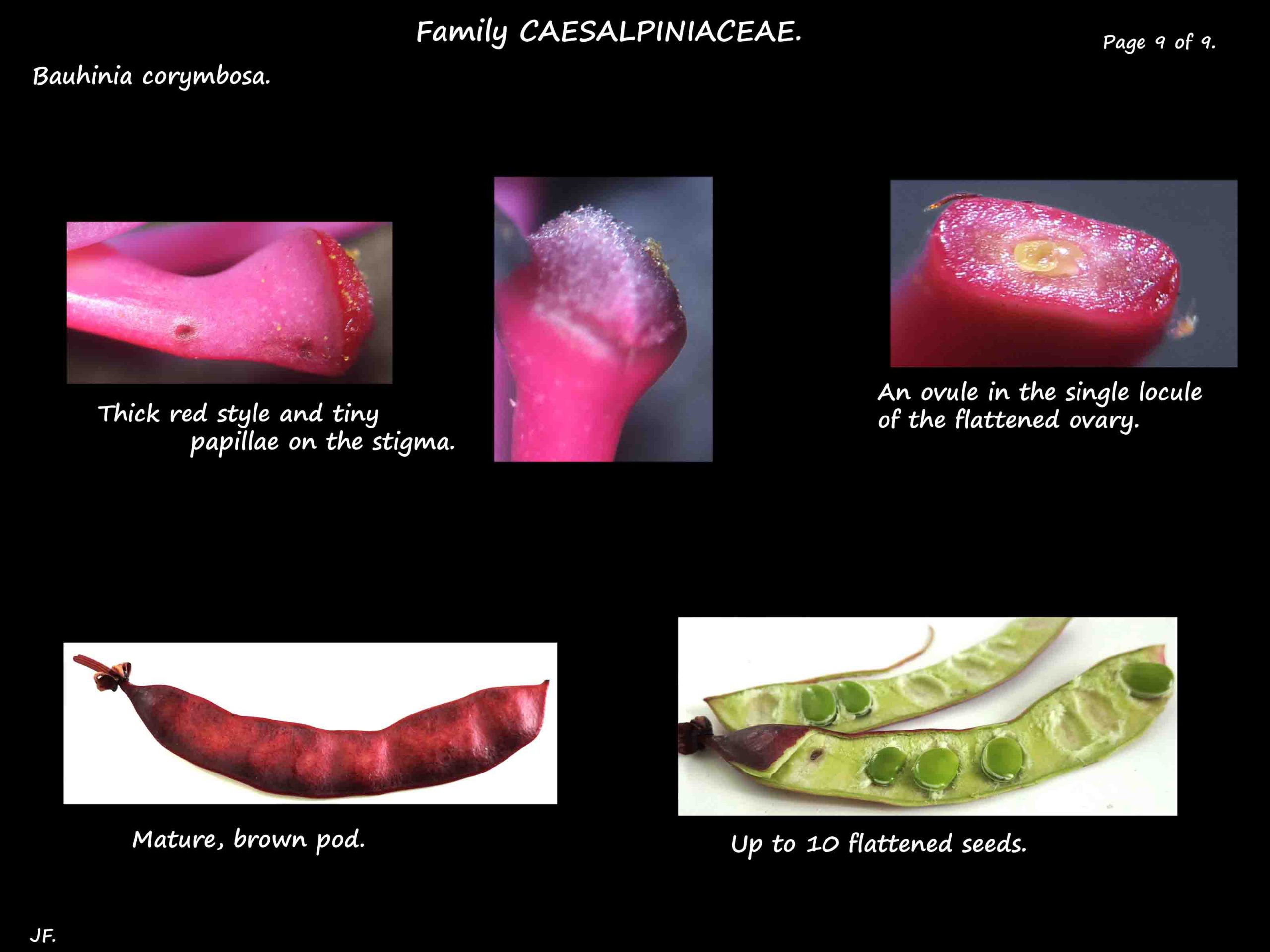Bauhinia corymbosa.
Climbing Bauhinia grows as a ground cover or climber.
Stems can be up to 6 m long.
Mostly evergreen they can loose some leaves in cold weather.
The young shoots are a reddish colour.
Stems are red and ribbed or slightly winged.
The alternate, round leaves about 2 cm long are on petioles about 1 cm long.
Leaves are deeply cleft, sometimes almost to the base.
The small appendage at the base of the cleft often falls off.
There are brownish hairs on the stems, petioles and underside of the leaves.
There are pairs of narrow, hairy stipules at the base of the petioles.
The tendrils it uses to climb also have brown hairs.
Inflorescences are terminal or in the near terminal axils.
They can be a solitary flower or spikes with numerous flowers.
The inflorescence axis and the individual flower stalks have reddish hairs.
There are linear bracteoles at the base of each flower.
There is a tapering hypanthium formed by the fused bases of the sepals, petals and stamens.
The sepals, red and with brownish hairs externally, curve backwards.
The 5 petals have some hairs on the narrow clawed base and also longish brown hairs down the midrib externally.
The petals, up to 5 cm long, are white with slight to marked pink areas along the veins.
Inside the 2 cm long hypanthium is a nectary tube.
At the top of this is an elevated, horseshoe-like structure.
Initially an almost translucent pale greenish colour it ages to a deep blackish-purple.
The up to 7 staminodes insert onto this and the adjacent rim of the nectary tube.
There are 3 long fertile stamens that curve downwards over the lower petals.
The smooth filaments are pink with a red base.
The dorsifixed anthers open via longitudinal slits.
The superior ovary is on a long, smooth stalk or gynophore that inserts into the side of the nectary tube.
The fruit are smooth, reddish-brown, slightly curved pods with about 8 to 10 flat seeds.
J.F.
